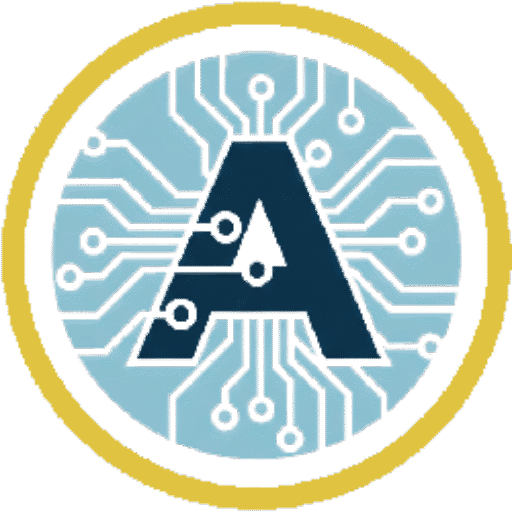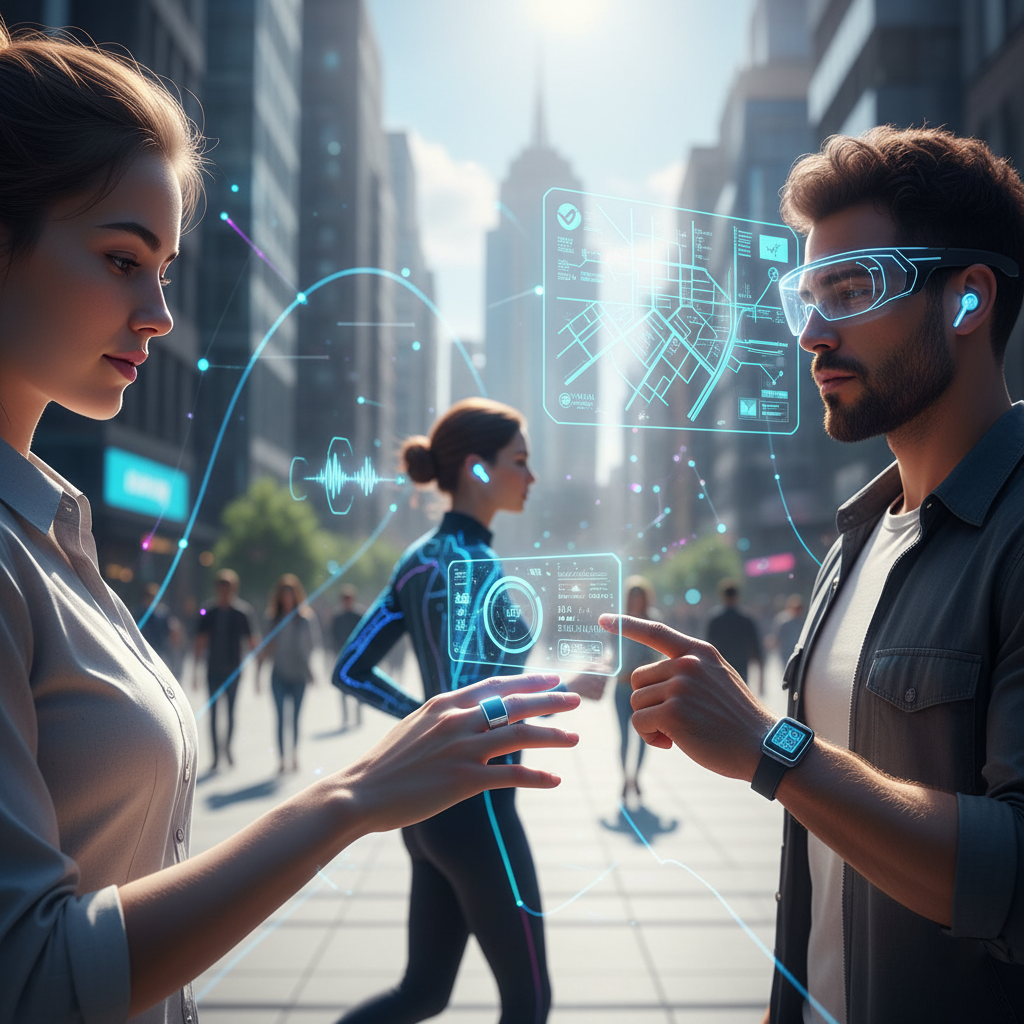Wearable tech trends are constantly reshaping the way we interact with technology, manage our health, and navigate the world. From the familiar smartwatch on your wrist to the less-obtrusive smart ring or the augmented reality glasses on your face, wearable technology has moved beyond a niche market and become an essential part of modern life. With the global wearable technology market projected for robust growth, understanding the latest developments is crucial for consumers, developers, and businesses alike.
This comprehensive guide breaks down the most significant wearable tech trends and innovations that are driving the industry forward, offering valuable insights into how these wearable devices are transforming various sectors.
The Biggest Shift: From Data Collection to Predictive Intelligence
One of the most profound wearable tech trends is the evolution from passive data collection (simply counting steps) to active, intelligent, and predictive insights. This is largely driven by the deep integration of Artificial Intelligence and Machine Learning.
1. AI-Powered Personalization and Predictive Health
The days of simply tracking your resting heart rate are over. New wearable devices are using AI to analyze vast streams of biometric data—heart rate variability, sleep stages, skin temperature, and activity patterns—to offer highly personalized and predictive insights.
- Real-Time Coaching: Wearables are now acting as personal health and fitness coaches, offering real-time advice on when to rest, when to push harder, or when to adjust your routine based on your body’s current recovery state.
- Early Detection: The AI algorithms embedded in advanced wearable sensors are becoming sophisticated enough to detect subtle changes that may indicate the onset of illness, stress spikes, or chronic conditions, moving healthcare from reactive to proactive.
- Mental Wellness Monitoring: Next-generation wearable technology is increasingly focused on cognitive health, using electroencephalography (EEG) sensors in headbands and other wearable tech gadgets to monitor brain activity, stress, and focus levels, guiding users toward improved mental well-being.
2. The Rise of Invisible and Ultra-Discreet Devices
As wearable tech matures, the industry is increasingly prioritizing sleekness, comfort, and fashion integration. This has fueled a significant wearable tech trend toward smaller, less noticeable form factors that blend seamlessly into daily life. The ultimate goal is technology that is both powerful and practically invisible, enhancing user experience without aesthetic compromise.
- Smart Rings: These devices are leading the charge in discreet design, packing advanced features (such as contactless payment, secure login authentication, and sleep monitoring) into minimalist jewelry. This form factor is appealing to the general consumer who wants functionality without the bulk of a smartwatch.
- Smart Jewelry and Apparel: Beyond the ring, technology is disappearing into everyday items. Smart clothing and electronic textiles with embedded wearable sensors are being developed for applications in professional sports training (analyzing form and performance) and industrial environments (monitoring worker fatigue and safety posture), providing data without requiring a separate gadget.
- Smart Patches for Commerce: Flexible, skin-adhered sensors are being explored for applications like non-invasive alcohol monitoring for drivers or for seamless digital authentication in high-security transactions, providing high-accuracy biometric data in the most minimal package.
New Frontiers in Wearable Form Factors
While wrist-worn devices still dominate the wearable technology market, innovative form factors are opening up entirely new applications and functionalities.
3. Augmented and Mixed Reality (AR/MR) Glasses
The maturity of Augmented Reality wearables is one of the most exciting wearable tech trends. These devices move the screen from the wrist to the eye, providing hands-free interaction with the digital world.
- Hands-Free Productivity: In enterprise and industrial settings, smart glasses offer workers real-time guidance, access to blueprints, or remote expert assistance, significantly boosting safety and productivity.
- Immersive Navigation and Communication: For consumers, AR glasses can overlay directions onto their field of view, provide instant language translation, or allow for remote, immersive collaboration. The goal is to blend digital information seamlessly into the real world.
4. Hearables: The Ear as a Biometric Hub
Hearables—advanced wireless earbuds and headphones—are evolving into much more than audio devices. Their close proximity to the inner ear makes them ideal for collecting highly accurate biometric data.
- Integrated Health Tracking: New hearables are integrating biometric sensors to monitor heart rate, body temperature, and even perform on-the-go fitness tracking, making them powerful wearable health devices.
- Enhanced Communication: Beyond superior noise cancellation, hearables are delivering real-time translation and voice-activated AI assistants, turning them into critical communication tools.
The Market and Ecosystem: Connectivity and Security
As the number of wearable devices multiplies, two key factors are influencing the entire ecosystem: robust connectivity and data security.
5. Seamless IoT and 5G Connectivity
The increasing adoption of wearable tech is intrinsically tied to the wider Internet of Things (IoT). Wearables serve as the edge devices that feed personal data into the larger connected ecosystem—your smart home, your car, and your doctor’s office.
- Cross-Device Integration: Wearable devices are becoming central hubs, seamlessly interacting with other smart products. Your watch may tell your smart thermostat to adjust the temperature based on your sleep phase, or it could unlock your car as you approach.
- 5G-Enabled Applications: The rollout of 5G is crucial for the future of wearable technology. The faster speeds and lower latency are essential for real-time applications like remote surgery training via AR glasses or the instant transmission of critical patient data for remote patient monitoring.
6. Focus on Data Privacy and Security
With wearable sensors collecting highly granular data on behavior, location, and vital signs, the issues of privacy, data ownership, and security have become critical factors influencing consumer trust and market adoption.
- Enhanced Authentication: Wearables are transforming personal security. Devices like smart rings and wristbands can use unique biometric patterns (like vein structure or gait) to provide high-level, continuous authentication for unlocking devices, accessing secure facilities, or approving high-value transactions, replacing passwords and keys.
- Data Ownership and Transparency: A major wearable tech trend is the push for greater user control over data. Consumers are demanding clear, transparent policies on how wearable devices collect and monetize their data streams. Companies that offer decentralized storage solutions or clear “opt-in” permissions are gaining a competitive edge.
- Secure Payment Integration: Integrating payment functionalities directly into a watch or ring introduces new security challenges. To ensure user confidence, manufacturers are leveraging tokenization and multi-factor authentication protocols, transforming these wearable devices into highly secure, convenient wallets for retail and online commerce.
Wearable Tech Form Factors and Functionality
Beyond the major market categories of smartwatches, smart rings, and AR glasses, the world of wearable technology is filled with innovative form factors and niche applications that demonstrate the breadth of this growing industry.
| Wearable Tech Example | Primary Form Factor | Key Applications & Functionality |
| Smart Footwear | Shoes/Soles | GPS tracking for children or the elderly; monitoring running gait and stride mechanics for athletes; providing haptic feedback for hands-free navigation. |
| Haptic Vests/Suits | Clothing | Used in virtual and augmented reality (VR/AR) gaming to provide immersive, touch-based feedback; professional training simulations for highly realistic, responsive scenarios. |
| Wearable Cameras | Lenses/Mounts | Hands-free recording for content creation (vlogging); first-person POV documentation for field service, maintenance, and inspection logs in enterprise settings. |
| Smart Helmets | Headwear | Integration of Heads-Up Displays (HUDs) for industrial workers and first responders; monitoring of ambient air quality and temperature; providing clear, integrated communication channels. |
| Biosensor Patches | Skin-adhered | Non-invasive, continuous monitoring of hydration and electrolyte levels in athletes; providing highly accurate, real-time data for peak physical performance. |
| Wearable Payment Accessories | Keychains/Bracelets | Facilitating secure, contactless transactions without requiring a phone or wallet, focused purely on convenience and speed in retail. |
Conclusion: A Worn Future
The current wearable tech trends demonstrate a clear path toward devices that are smarter, more integrated, and virtually unnoticeable. The next generation of wearable technology will move beyond simple notifications to become personalized, predictive health coaches and seamless interfaces to the augmented world. As wearable sensors continue to miniaturize and AI algorithms become more sophisticated, the line between human and technology will continue to blur, making wearable tech an indispensable part of a proactive and connected lifestyle.

